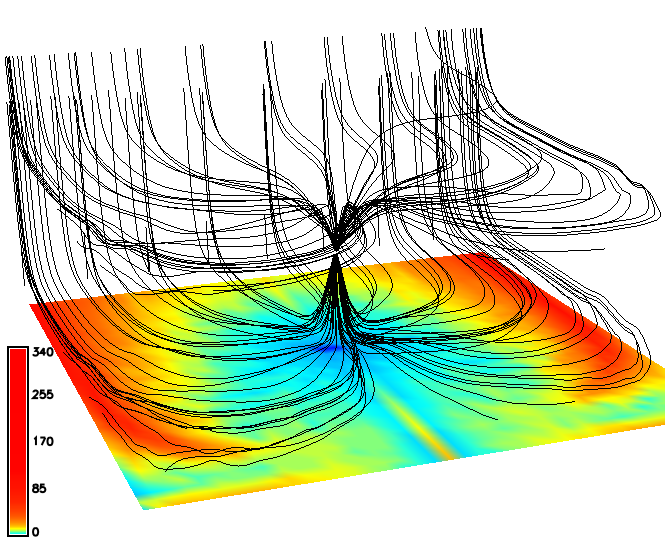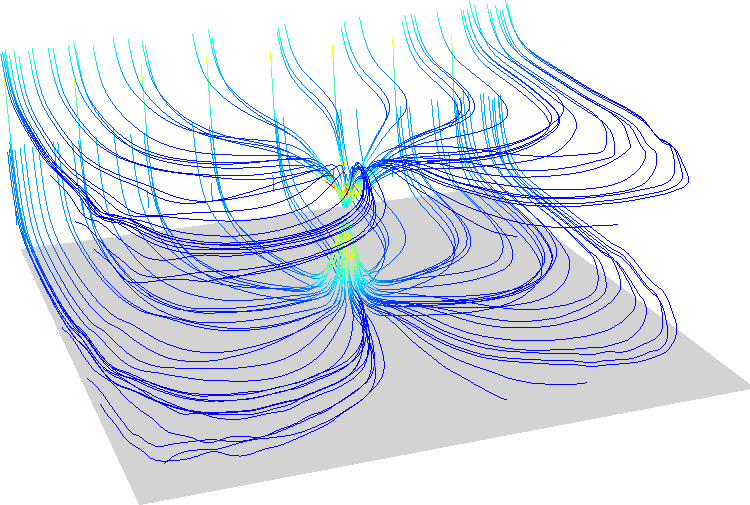r3.flow
Computes 3D flow lines and 3D flow accumulation.
r3.flow [-a] [input=name] [vector_field=name [,name,...]] [seed_points=name] [flowline=name] [flowaccumulation=name] [sampled=name] [unit=string] [step=float] [limit=integer] [max_error=float] [skip=integer [,integer,...]] [direction=string] [--overwrite] [--verbose] [--quiet] [--qq] [--ui]
Example:
r3.flow input=name
grass.script.run_command("r3.flow", input=None, vector_field=None, seed_points=None, flowline=None, flowaccumulation=None, sampled=None, unit="cell", step=0.25, limit=2000, max_error=1e-5, skip=None, direction="down", flags=None, overwrite=None, verbose=None, quiet=None, superquiet=None)
Example:
gs.run_command("r3.flow", input="name")
grass.tools.Tools.r3_flow(input=None, vector_field=None, seed_points=None, flowline=None, flowaccumulation=None, sampled=None, unit="cell", step=0.25, limit=2000, max_error=1e-5, skip=None, direction="down", flags=None, overwrite=None, verbose=None, quiet=None, superquiet=None)
Example:
tools = Tools()
tools.r3_flow(input="name")
This grass.tools API is experimental in version 8.5 and expected to be stable in version 8.6.
Parameters
input=name
Name of input 3D raster map
vector_field=name [,name,...]
Names of three 3D raster maps describing x, y, z components of vector field
seed_points=name
Name of vector map with points from which flow lines are generated
If no map is provided, flow lines are generated from each cell of the input 3D raster
flowline=name
Name for vector map of flow lines
flowaccumulation=name
Name for output flowaccumulation 3D raster
sampled=name
Name for 3D raster sampled by flowlines
Values of this 3D raster will be stored as attributes of flowlines segments
unit=string
Unit of integration step
Default unit is cell
Allowed values: time, length, cell
Default: cell
time: elapsed time
length: length in map units
cell: length in cells (voxels)
step=float
Integration step in selected unit
Default step is 0.25 cell
Default: 0.25
limit=integer
Maximum number of steps
Default: 2000
max_error=float
Maximum error of integration
Influences step, increase maximum error to allow bigger steps
Default: 1e-5
skip=integer [,integer,...]
Number of cells between flow lines in x, y and z direction
direction=string
Compute flowlines upstream, downstream or in both direction.
Allowed values: up, down, both
Default: down
-a
Create and fill attribute table
--overwrite
Allow output files to overwrite existing files
--help
Print usage summary
--verbose
Verbose module output
--quiet
Quiet module output
--qq
Very quiet module output
--ui
Force launching GUI dialog
input : str, optional
Name of input 3D raster map
Used as: input, raster_3d, name
vector_field : str | list[str], optional
Names of three 3D raster maps describing x, y, z components of vector field
Used as: input, raster_3d, name
seed_points : str, optional
Name of vector map with points from which flow lines are generated
If no map is provided, flow lines are generated from each cell of the input 3D raster
Used as: input, vector, name
flowline : str, optional
Name for vector map of flow lines
Used as: output, vector, name
flowaccumulation : str, optional
Name for output flowaccumulation 3D raster
Used as: output, raster_3d, name
sampled : str, optional
Name for 3D raster sampled by flowlines
Values of this 3D raster will be stored as attributes of flowlines segments
Used as: input, raster_3d, name
unit : str, optional
Unit of integration step
Default unit is cell
Allowed values: time, length, cell
time: elapsed time
length: length in map units
cell: length in cells (voxels)
Default: cell
step : float, optional
Integration step in selected unit
Default step is 0.25 cell
Default: 0.25
limit : int, optional
Maximum number of steps
Default: 2000
max_error : float, optional
Maximum error of integration
Influences step, increase maximum error to allow bigger steps
Default: 1e-5
skip : int | list[int] | str, optional
Number of cells between flow lines in x, y and z direction
direction : str, optional
Compute flowlines upstream, downstream or in both direction.
Allowed values: up, down, both
Default: down
flags : str, optional
Allowed values: a
a
Create and fill attribute table
overwrite : bool, optional
Allow output files to overwrite existing files
Default: None
verbose : bool, optional
Verbose module output
Default: None
quiet : bool, optional
Quiet module output
Default: None
superquiet : bool, optional
Very quiet module output
Default: None
input : str, optional
Name of input 3D raster map
Used as: input, raster_3d, name
vector_field : str | list[str], optional
Names of three 3D raster maps describing x, y, z components of vector field
Used as: input, raster_3d, name
seed_points : str, optional
Name of vector map with points from which flow lines are generated
If no map is provided, flow lines are generated from each cell of the input 3D raster
Used as: input, vector, name
flowline : str, optional
Name for vector map of flow lines
Used as: output, vector, name
flowaccumulation : str, optional
Name for output flowaccumulation 3D raster
Used as: output, raster_3d, name
sampled : str, optional
Name for 3D raster sampled by flowlines
Values of this 3D raster will be stored as attributes of flowlines segments
Used as: input, raster_3d, name
unit : str, optional
Unit of integration step
Default unit is cell
Allowed values: time, length, cell
time: elapsed time
length: length in map units
cell: length in cells (voxels)
Default: cell
step : float, optional
Integration step in selected unit
Default step is 0.25 cell
Default: 0.25
limit : int, optional
Maximum number of steps
Default: 2000
max_error : float, optional
Maximum error of integration
Influences step, increase maximum error to allow bigger steps
Default: 1e-5
skip : int | list[int] | str, optional
Number of cells between flow lines in x, y and z direction
direction : str, optional
Compute flowlines upstream, downstream or in both direction.
Allowed values: up, down, both
Default: down
flags : str, optional
Allowed values: a
a
Create and fill attribute table
overwrite : bool, optional
Allow output files to overwrite existing files
Default: None
verbose : bool, optional
Verbose module output
Default: None
quiet : bool, optional
Quiet module output
Default: None
superquiet : bool, optional
Very quiet module output
Default: None
Returns:
result : grass.tools.support.ToolResult | None
If the tool produces text as standard output, a ToolResult object will be returned. Otherwise, None will be returned.
Raises:
grass.tools.ToolError: When the tool ended with an error.
DESCRIPTION
Module r3.flow computes 3D flow lines and 3D flow accumulation. It accepts either three 3D raster maps representing the vector field or one 3D raster map. In case of one map, it computes on-the-fly gradient field.
Flow lines
Flow lines are computed either from points (seeds) provided in seed_points vector map, or if there are no seeds, it creates seeds in a regular grid in the center of voxels (3D raster cells). Parameter skip then controls the step between the regularly distributed seeds. If skip is not provided, r3.flow decides optimal skip for each dimension based on current 3D region as one tenth of the number of columns, rows, and depths. Flow lines can be computed in upstream direction (in the direction of gradient or vector field), in downstream direction or in both directions.
Flow accumulation
Flow accumulation is computed as the number of flow lines traversing each voxel. Since the flow lines are computed for each voxel, the flow accumulation computation can be more demanding. Parameter skip does not influence the flow accumulation computation, parameter direction does.
Flow line integration
Flow line integration can be influenced by several parameters. Option step controls the integration step and influences the precision and computational time. The unit of step can be defined either in terms of the size of the voxel (3D raster cell), length in map units, or as elapsed time. Option limit specifies the maximum number of steps of each flow line.
Attributes
Without using flag a, no attribute table is created and each flow line is represented by one vector line with one category. With a flag, an attribute table is created and each category (record) represents one segment of a flowline, so that attributes specific for segments can be written. In case of vector_field input, only velocity is written, in case of input option, also values of the input 3D raster are written. Option sampled allows sampling (query) given 3D raster by flow lines (computed from different 3D raster) and write the values of the given 3D raster as attributes of the flow line segments. Note that using a flag results in longer computation time, so consider increasing step and max_error parameter.
NOTES
r3.flow uses Runge-Kutta with adaptive step size (Cash-Karp method).
EXAMPLES
First we create input data using example 1 from r3.gwflow manual page:
# set the region accordingly
g.region res=25 res3=25 t=100 b=0 n=1000 s=0 w=0 e=1000 -p3
# now create the input raster maps for a confined aquifer
r3.mapcalc expression="phead = if(row() == 1 && depth() == 4, 50, 40)"
r3.mapcalc expression="status = if(row() == 1 && depth() == 4, 2, 1)"
r3.mapcalc expression="well = if(row() == 20 && col() == 20 && depth() == 2, -0.25, 0)"
r3.mapcalc expression="hydcond = 0.00025"
r3.mapcalc expression="syield = 0.0001"
r.mapcalc expression="recharge = 0.0"
r3.gwflow solver=cg phead=phead status=status hc_x=hydcond hc_y=hydcond \
hc_z=hydcond q=well s=syield r=recharge output=gwresult dt=8640000 vx=vx vy=vy vz=vz budget=budget
Then we compute flow lines in both directions and downstream flowaccumulation.
r3.flow vector_field=vx,vy,vz flowline=gw_flowlines skip=5,5,2 direction=both
r3.flow vector_field=vx,vy,vz flowaccumulation=gw_flowacc
We can visualize the result in 3D view:
We can store velocity values (and values of the input 3D raster map if we use option input) for each segment of flow line in an attribute table.
r3.flow -a vector_field=vx,vy,vz flowline=gw_flowlines skip=5,5,2 direction=both
v.colors map=flowlines_color@user1 use=attr column=velocity color=bcyr
Again, we visualize the result in 3D view and we check 'use color for thematic rendering' on 3D view vector page.
SEE ALSO
r.flow, r3.gradient, r3.gwflow
AUTHOR
Anna Petrasova, NCSU GeoForAll Lab, developed during GSoC 2014.
SOURCE CODE
Available at: r3.flow source code
(history)
Latest change: Monday Nov 03 07:16:48 2025 in commit c967967

